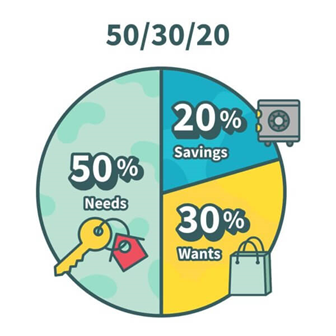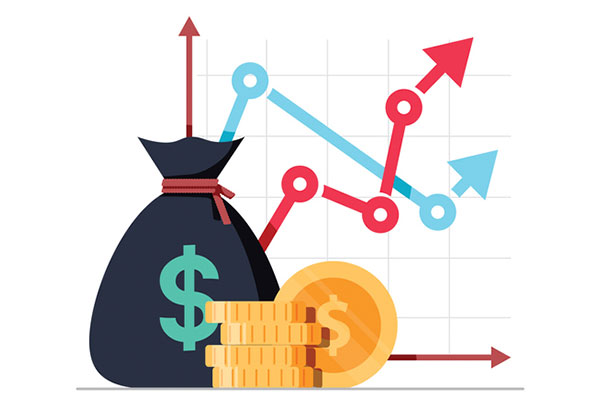Introduction: Budgets

A budget is a personal financial plan used to manage income and expenses over a set period of time.
Here are some concepts that are important to a Budget:
- Fixed V.S Variable Expense
- Fixed expenses: Costs that remain constant --- Variable expenses: Costs that vary
- Non-discretionary V.S Discretionary Expense
- Non-discretionary expenses: Essential => Basic needs
- Discretionary expenses: Wants, and are not mandatory.
- Gross V.S Net Income
- Gross income: What is earn before taxes, benefits and other payroll deductions
- Net income: The actual take-home pay after all withholdings
- Example: Calculate Provincial and Federal tax
- An example of a major deduction from your gross income to net income
Here's how you calculate it: - Calculate the Sum of Taxes you owe
- Take a look at the chart to the right => For each interval you are eligible, you are required
to apply the rate for each taxable income and deduct it. - In a
progressive tax system your income tax is cumulative
__________________________________________________________________________________________________________________________
Use this python code to calculate tax to get an estimate from gross to net income
| Tax Rate | Income Bracket |
|---|---|
| 15% | $53,359 or less |
| 20.5% | $53,359.01 to $106,717 |
| 26% | $106,717.01 to $165,430 |
| 29% | $165,430.01 to $235,675 |
| 33% | More than $235,675.01 |
| Tax Rate | Income Bracket |
|---|---|
| 5.05% | First $49,231 |
| 9.15% | Over $49,231 up to $98,463 |
| 11.16% | Over $98,463 up to $150,000 |
| 12.16% | Over $150,000 up to $220,000 |
| 13.16% | Over $220,000 |
Appreciation and Depreciation with Percentages
Appreciation and Depreciation describe the change of an asset's value over a period of time
- Definitions
- Appreciation: Rise in value of an asset --- Depreciation: Reduces the value overtime
- Formulas for the Functions
- For both
- Linear growth: f(x) = mx+b
- Exponential growth: f(x) = a(1+r)^x
- Differences:
- Appreciation => m > 1 & 1+r > 1.
- Depreciation => m < 1 & 1+r < 1.
- Application with Percentages
- In real life situations (e.g. Interest), the rate is given in a percentage per unit of time
- Calculations require percentages to be converted into decimals
Interest and Borrowing with Rates
Interest is the monetary charge for borrowing money. They two types include:
Simple Interest:
- Calculated only on the principal amount each period
- Formula: I=p*r*t
- An example of Linear growth appreciation
- Doesn't accumulate as quickly
Compound Interest:
- Compound Interest is calculated on both the principal amount and the interest that accumulates each period
- Formula: A = P(1+r/n)^nt
- An example of Exponential growth appreciation
- Accumulates more rapidly
Check out this program that calculates both compound and simple interest

How to Use Proportions for Budgeting
Proportions can be used to solve problems involving rates and percentages
- Definitions
- Unit Rate: A ratio with a denominator as one
- Proportion: Equation in which two ratios are set equal to other
- Application of Unit Rates in Budgeting
- When given two ratios, convert both to unit rates and compare the numerator.
- For example, if you were given two rates for product in $/g, you could convert both to # of dollars for each gram.
- Unit Rate Calculator
Interactive code with Budgeting
Now you can view this concepts incorporated in a summative code I have created in Python!
Click on this link to view the code for the calculatorDescription:
Budgeting Calculator that organizes the user's inputs based on their expenses.
The program used code from both the interest and gross => net income calcultors' already shown on this website

